Why Your Body is Like a Smart Factory
Imagine your body as a bustling factory that never stops working. Just like any factory, it produces waste products that need to be removed efficiently to keep everything running smoothly. This is where excretion comes in – one of the most vital processes that keeps you alive and healthy!
Every second, millions of chemical reactions happen in your cells. While these reactions produce energy and help you grow, they also create waste products that could be toxic if left to accumulate. Your excretory system works like the most sophisticated waste management system on Earth, filtering out harmful substances while keeping the good stuff your body needs.
In this comprehensive guide, we’ll explore Topic 13 of your IGCSE Biology syllabus, breaking down everything you need to know about excretion in humans. Whether you’re preparing for your exams or just curious about how your amazing body works, this guide will make excretion as clear as crystal!
What is Excretion? The Big Picture
Defining Excretion
Excretion is the process of removing metabolic waste products from the body. But here’s what makes it special – it’s not just about getting rid of any waste (like undigested food), but specifically about removing toxic substances that your own cells have produced.
Key Point: Don’t confuse excretion with egestion! Egestion is removing undigested food through defecation, while excretion is removing metabolic waste products that your cells have actually produced.
Why is Excretion Essential?
Think of it this way: if you never took out your household trash, your home would become uninhabitable pretty quickly. Similarly, without excretion:
- Toxic waste products would poison your cells
- Your blood chemistry would become dangerously imbalanced
- Cellular processes would slow down and eventually stop
- You wouldn’t survive more than a few days!
Major Excretory Products in Humans
- Carbon dioxide (CO₂) – produced during cellular respiration
- Urea – formed from the breakdown of amino acids
- Water – excess water that could dilute your blood
- Mineral salts – excess ions that could disturb your body’s balance
The Excretory Organs: Your Body’s Cleanup Crew
The Lungs: Your Gas Exchange Champions
Your lungs don’t just help you breathe – they’re also crucial excretory organs!
What they excrete:
- Carbon dioxide (the main waste product of cellular respiration)
- Small amounts of water vapor
How it works:
When you breathe out, you’re literally removing waste products from every cell in your body. The CO₂ in your exhaled breath was produced by cellular respiration and transported to your lungs via your bloodstream.
The Skin: Your Largest Excretory Organ
Your skin is amazing – it protects you AND helps remove waste!
What it excretes through sweat:
- Water (helps cool you down too!)
- Mineral salts (mainly sodium chloride)
- Small amounts of urea
Fun Fact: You lose about 0.5-1 liter of water through your skin every day, even when you’re not actively sweating!
The Liver: Your Chemical Processing Plant
While the liver isn’t technically an excretory organ, it plays a crucial role in preparing waste for excretion.
Key function: Deamination
The liver breaks down excess amino acids through a process called deamination, converting the toxic ammonia produced into less harmful urea.
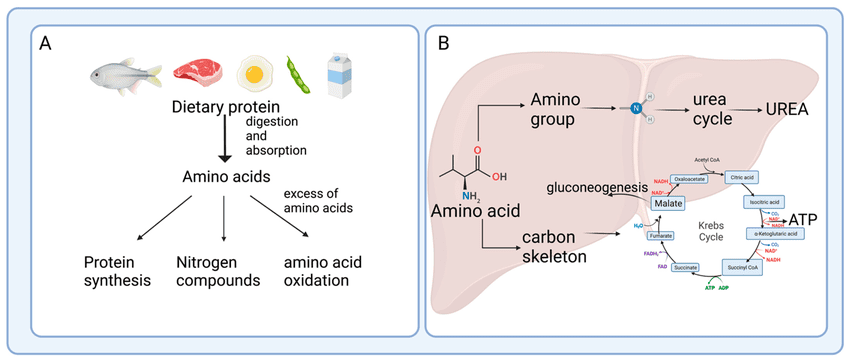
The Kidneys: Your Body’s Master Filters
Why Kidneys are Extraordinary
Your two kidneys are roughly the size of your fists, but they’re incredibly powerful. They:
- Filter your entire blood supply about 60 times per day
- Process approximately 180 liters of fluid daily
- Maintain the perfect balance of water and salts in your body
- Keep your blood pH stable
Gross Structure of the Kidney
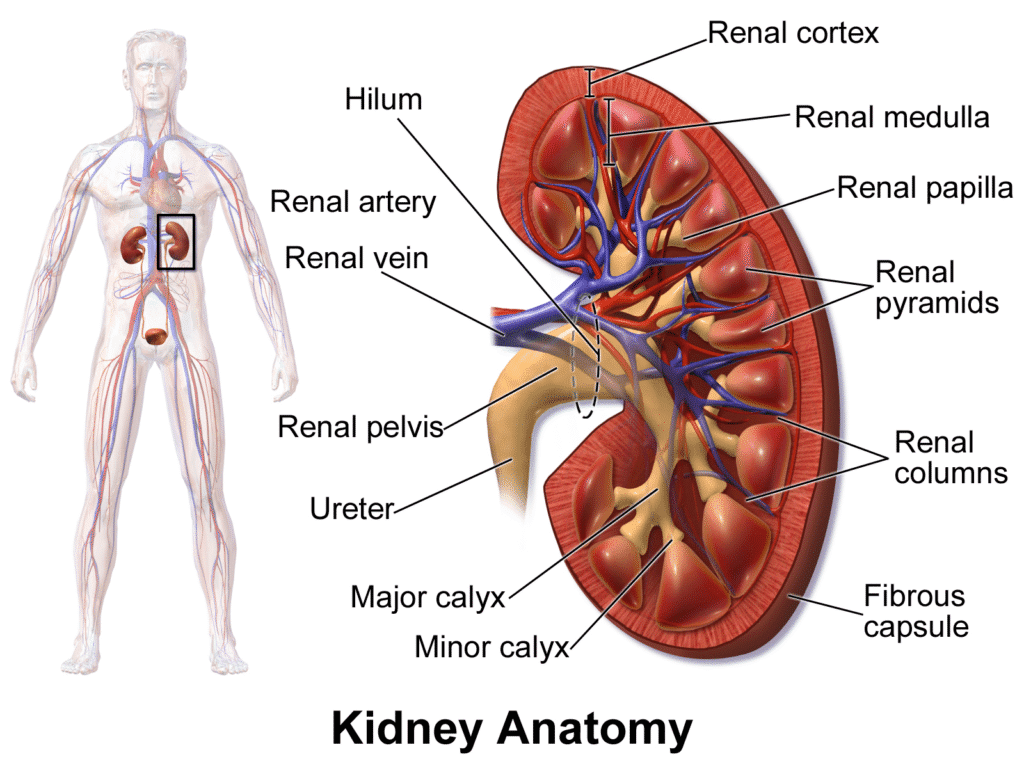
Key regions:
- Cortex (outer layer) – contains the filtering units
- Medulla (inner layer) – contains the concentrating tubes
- Pelvis (central cavity) – collects urine
- Ureter – carries urine to the bladder
Blood Supply to the Kidneys
The kidneys receive an enormous blood supply through:
- Renal artery (brings blood TO the kidney)
- Renal vein (takes filtered blood AWAY from the kidney)
Amazing fact: About 25% of your heart’s output goes to your kidneys, even though they’re only about 1% of your body weight!
The Nephron: Nature’s Perfect Filter
What is a Nephron?
A nephron is the functional unit of the kidney – think of it as a microscopic water treatment plant. Each kidney contains about 1 million nephrons!
Structure of a Nephron
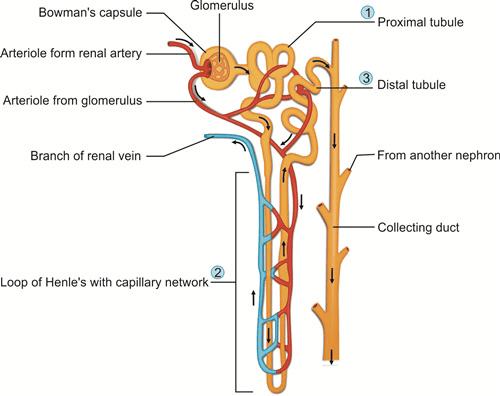
Components:
- Bowman’s Capsule
- Cup-shaped structure that starts the filtration process
- Contains the glomerulus (cluster of tiny blood vessels)
- Proximal Convoluted Tubule
- First twisted section after Bowman’s capsule
- Where most reabsorption happens
- Loop of Henle
- U-shaped section that dips into the medulla
- Creates the concentration gradient for water reabsorption
- Distal Convoluted Tubule
- Second twisted section
- Fine-tuning of salt and water balance
- Collecting Duct
- Final section where urine concentration is finalized
- Multiple nephrons drain into each collecting duct
How Kidneys Work: The Three-Step Process
Step 1: Ultrafiltration
What happens:
Blood pressure forces water and small molecules through the glomerular capillary walls into Bowman’s capsule.
What gets filtered out:
- Water
- Glucose
- Amino acids
- Mineral salts
- Urea
- Other small molecules
What stays in the blood:
- Red blood cells (too big)
- White blood cells (too big)
- Platelets (too big)
- Proteins (too big)
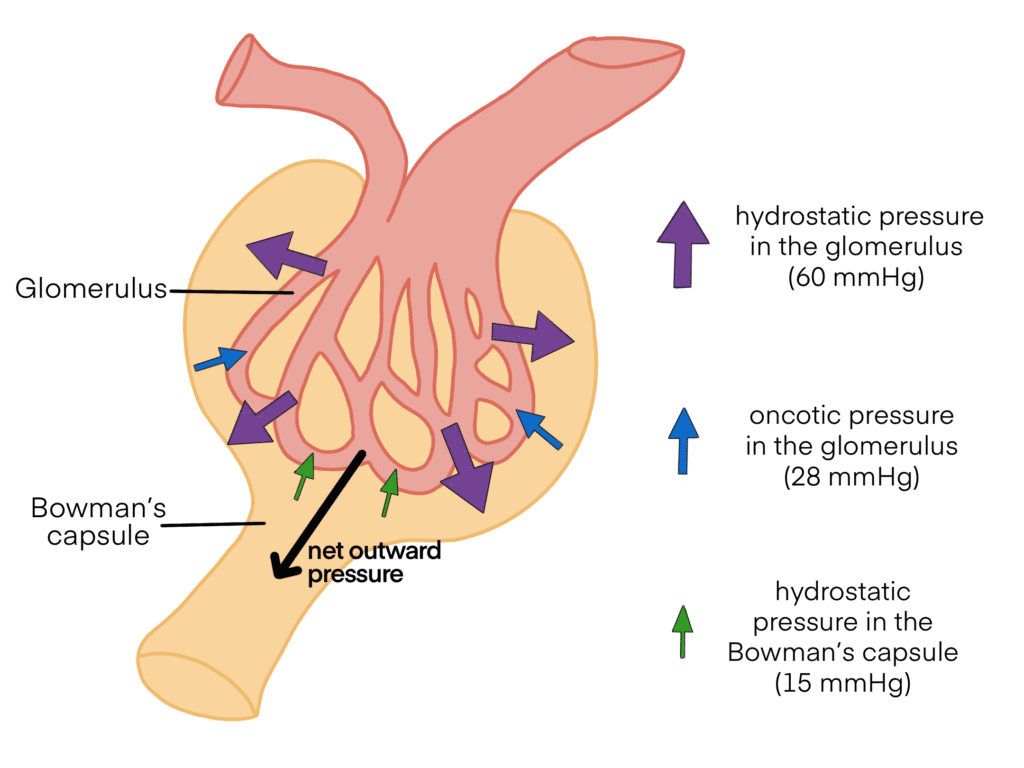
Key Point: This is called “ultrafiltration” because it filters out molecules based on size, just like an ultra-fine sieve.
Step 2: Selective Reabsorption
What happens:
The body reclaims useful substances from the filtrate as it flows through the nephron tubules.
What gets reabsorbed:
- 100% of glucose (your body needs every bit!)
- Most amino acids (building blocks for proteins)
- Most water (about 99% gets reabsorbed)
- Mineral salts (as needed for homeostasis)
Where it happens:
- Proximal convoluted tubule: Most glucose, amino acids, and some water
- Loop of Henle: More water and some salts
- Distal convoluted tubule and collecting duct: Fine-tuning based on body needs
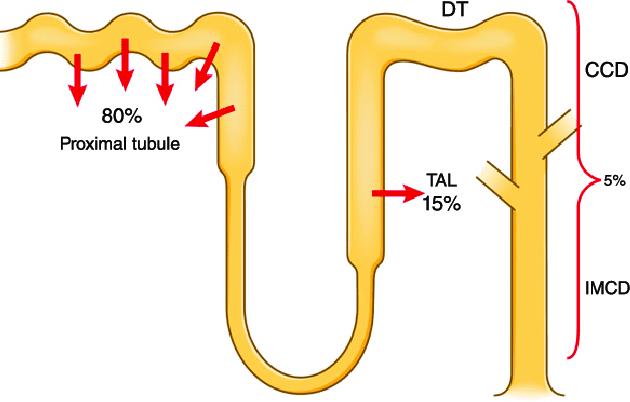
Memory Tip: Think “Selective Reabsorption” = “Select what to Rescue”
Step 3: Secretion (Active Removal)
What happens:
Additional waste products are actively transported from the blood into the urine.
What gets secreted:
- Excess hydrogen ions (H⁺) – to maintain blood pH
- Excess potassium ions (K⁺) – to prevent heart problems
- Some drugs and toxins
- Additional urea
Why it’s important:
This step ensures that even substances that weren’t filtered initially can still be removed from the body.
Osmoregulation: Your Body’s Water Balance System
What is Osmoregulation?
Osmoregulation is the process of maintaining the right balance of water and salts in your body fluids. It’s like having an internal thermostat, but for water instead of temperature!
Why Water Balance Matters
Too much water in blood:
- Cells swell and could burst
- Blood pressure increases
- Brain function can be affected
Too little water in blood:
- Cells shrink and can’t function properly
- Blood becomes thick and hard to pump
- Kidney damage can occur
How Your Kidneys Regulate Water
When you’re dehydrated:
- Your hypothalamus detects concentrated blood
- It releases more ADH (Antidiuretic Hormone)
- ADH makes collecting ducts more permeable to water
- More water is reabsorbed, less urine is produced
- Urine becomes more concentrated and darker
When you have excess water:
- Your hypothalamus detects diluted blood
- It releases less ADH
- Collecting ducts become less permeable to water
- Less water is reabsorbed, more urine is produced
- Urine becomes more dilute and lighter
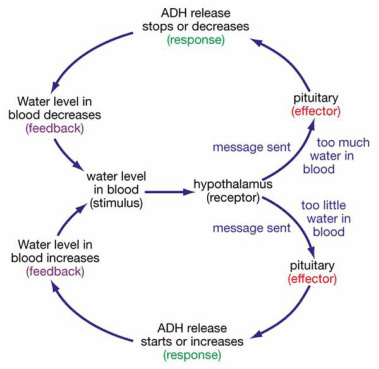
Real-life example: Ever notice how your urine is darker in the morning or after exercise? That’s your kidneys conserving water when your body needs it most!
Kidney Disease and Dialysis
When Kidneys Fail
Unfortunately, kidneys can be damaged by:
- Diabetes (high blood sugar damages blood vessels)
- High blood pressure
- Infections
- Genetic disorders
- Certain medications
Kidney Dialysis: The Artificial Kidney
When kidneys fail, dialysis can take over their function.
How hemodialysis works:
- Blood is pumped from the patient’s body
- It flows through a machine containing a semi-permeable membrane
- Waste products diffuse out of the blood
- Clean blood is returned to the patient
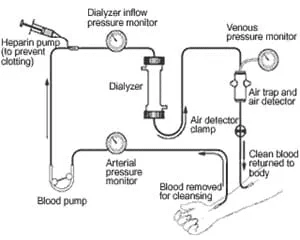
Key principles:
- Diffusion: Waste products move from high concentration (blood) to low concentration (dialysis fluid)
- Semi-permeable membrane: Allows small waste molecules through but keeps blood cells and proteins in the blood
Common Exam Questions and How to Answer Them
Question Type 1: Structure and Function
Example: “Explain how the structure of the glomerulus is adapted for ultrafiltration.”
How to answer:
- Mention the high surface area due to many capillaries
- Describe the thin capillary walls for easy filtration
- Explain the high blood pressure created by narrow efferent arteriole
- Link each structural feature to its function
Question Type 2: Process Explanation
Example: “Describe the process of urine formation.”
Perfect answer structure:
- Ultrafiltration: What, where, what’s filtered
- Selective reabsorption: What’s reabsorbed, where, why
- Secretion: Additional waste removal
- Result: Concentrated urine formation
Question Type 3: Homeostasis
Example: “Explain how the kidneys respond when the body is dehydrated.”
Answer framework:
- Detection of problem (concentrated blood)
- Control center response (hypothalamus releases ADH)
- Effector action (kidneys reabsorb more water)
- Result (less, more concentrated urine)
- Negative feedback (blood concentration returns to normal)
Key Formulas and Equations Box
Important Equations for IGCSE Biology Topic 13:
1. Deamination:
Amino acid → Ammonia + Organic acid
(in liver: Ammonia → Urea)
2. Cellular Respiration (producing CO₂):
C₆H₁₂O₆ + 6O₂ → 6CO₂ + 6H₂O + ATP
3. Protein Metabolism:
Proteins → Amino acids → Deamination → Urea
4. Water Balance Equation:
Water In = Water Out + Water Stored
(Water in from drinks, food, metabolism)
(Water out through urine, sweat, breathing, feces)Memory Tips and Mnemonics
Remember the Nephron Parts:
“Big Pandas Play Loudly During Concerts”
- Bowman’s capsule
- Proximal convoluted tubule
- Part of Loop of Henle (descending)
- Loop of Henle (ascending)
- Distal convoluted tubule
- Collecting duct
ADH Function:
“ADH = Add water back”
More ADH = More water reabsorption = Less urine
Excretion vs. Egestion:
“Excretion = EXit from CELLs” (metabolic waste from cells)
“Egestion = EGG out” (undigested food out)
Quick Revision Notes
Key Definitions Checklist
- Excretion: Removal of metabolic waste products from the body
- Ultrafiltration: Filtering blood under pressure based on molecule size
- Selective reabsorption: Reclaiming useful substances from filtrate
- Osmoregulation: Maintaining water and salt balance
- ADH: Hormone controlling water reabsorption in kidneys
- Deamination: Breaking down amino acids in the liver
Essential Facts
- Kidneys filter 180L of fluid daily but only produce 1-2L of urine
- Each kidney has about 1 million nephrons
- 99% of filtered water is reabsorbed
- CO₂ is excreted through lungs, urea through kidneys
- Liver converts toxic ammonia to less harmful urea
Process Summary
- Ultrafiltration in glomerulus/Bowman’s capsule
- Selective reabsorption in tubules
- Secretion of additional wastes
- Concentration in collecting duct
- Storage in bladder, elimination through urethra
Common Mistakes to Avoid
Don’t Say This → Say This Instead
❌ “Kidneys filter waste products”
✅ “Kidneys filter blood, then reabsorb useful substances”
❌ “Urea is filtered out in the glomerulus”
✅ “Urea is small enough to be filtered, but most other waste is removed by secretion”
❌ “The kidney produces urine”
✅ “The nephrons in the kidney produce urine through filtration, reabsorption, and secretion”
❌ “ADH increases water production”
✅ “ADH increases water reabsorption, decreasing urine volume”
Graph and Data Questions
- Always read axes labels carefully
- Look for trends (increasing/decreasing)
- Relate changes to biological processes
- Use data from the graph in your explanations
Test Yourself: Practice Questions
Quick Check Questions:
- Name the three main processes involved in urine formation.
- Which hormone controls water reabsorption in the kidneys?
- Where in the nephron does most glucose reabsorption occur?
- What is the difference between the renal artery and renal vein?
Extended Response Practice:
- Explain how the kidney maintains water balance in the body when a person becomes dehydrated. (6 marks)
- Describe the structure and function of a nephron. (8 marks)
- Compare and contrast excretion and egestion. (4 marks)
Data Analysis Practice:
Create a table comparing the composition of blood plasma, glomerular filtrate, and urine. Explain the differences you observe.
Connecting to Real Life
Why This Topic Matters
Understanding excretion isn’t just about passing exams – it connects to real health issues:
- Diabetes: High blood sugar damages kidney filters
- Kidney stones: Form when waste products crystallize
- Drug testing: Works because kidneys excrete drug metabolites
- Sports performance: Proper hydration affects kidney function
- Medical careers: Essential knowledge for healthcare professionals
Environmental Connections
Your kidneys are like biological water treatment plants – understanding how they work helps you appreciate:
- Why water pollution is dangerous
- How dialysis machines were invented
- Why organ donation saves lives
- How desert animals have super-efficient kidneys
Final Motivation
Remember, every biology concept you master brings you closer to understanding the incredible machine that is your body. Excretion might seem like a simple topic, but it reveals the elegant complexity of life itself.
Your kidneys are working right now as you read this, maintaining the perfect environment for your cells to thrive. By understanding how they work, you’re not just learning for an exam – you’re discovering the amazing science that keeps you alive every single day.
Keep going, keep learning, and remember: every expert was once a beginner. You’ve got this!
Recommended –

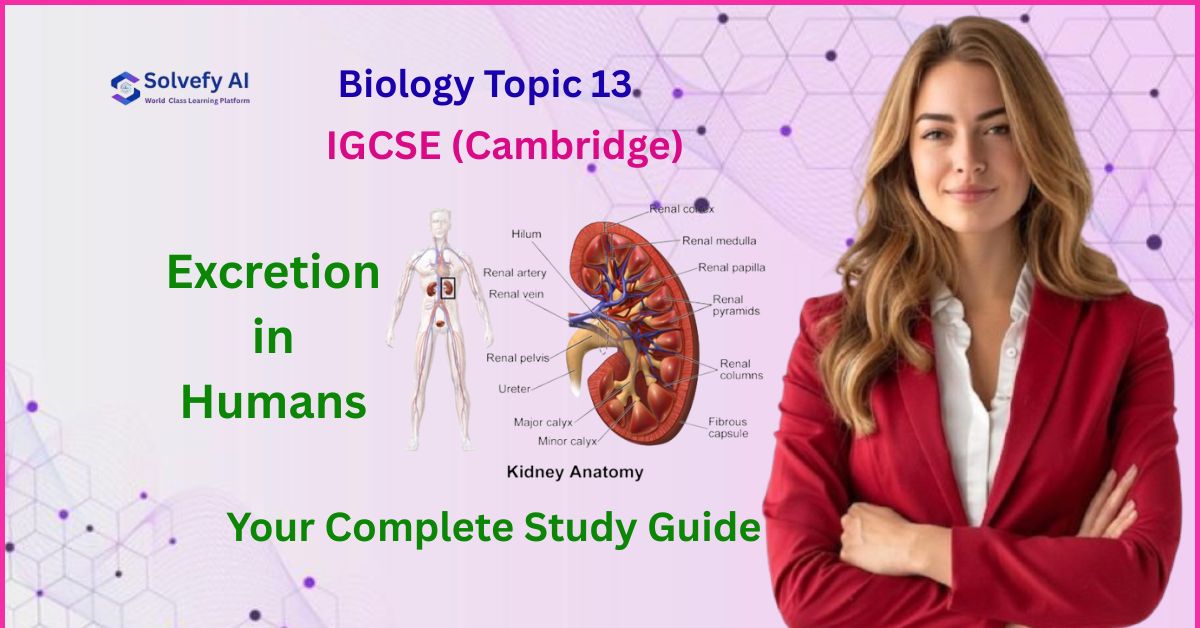
1 thought on “Excretion in Humans | IGCSE Biology Topic 13 Complete Guide”